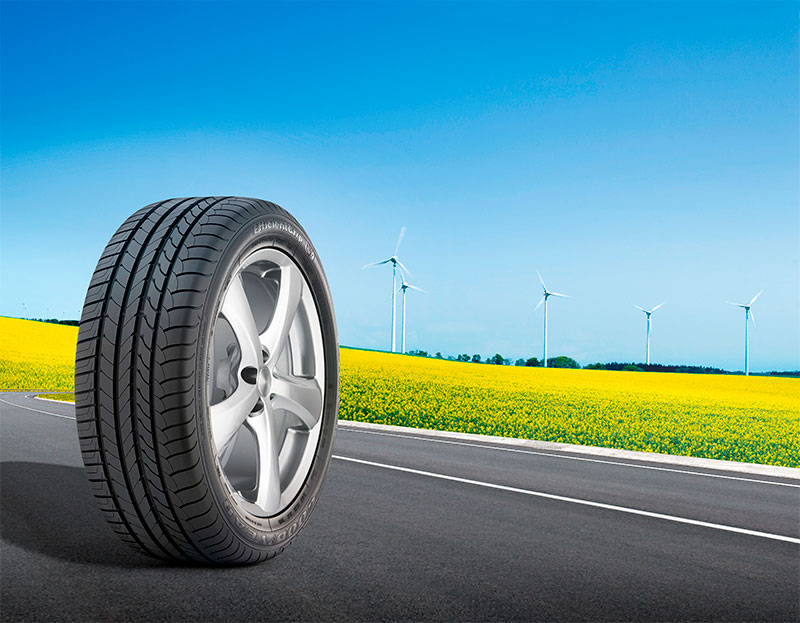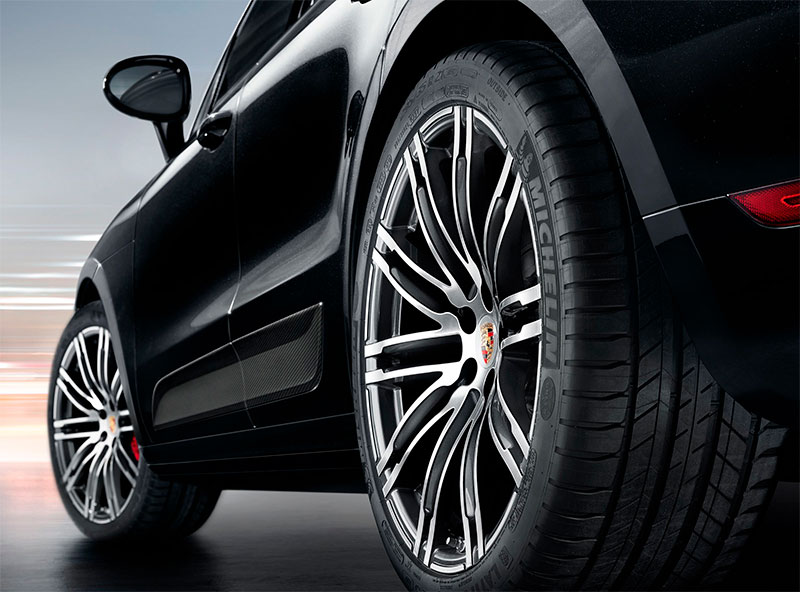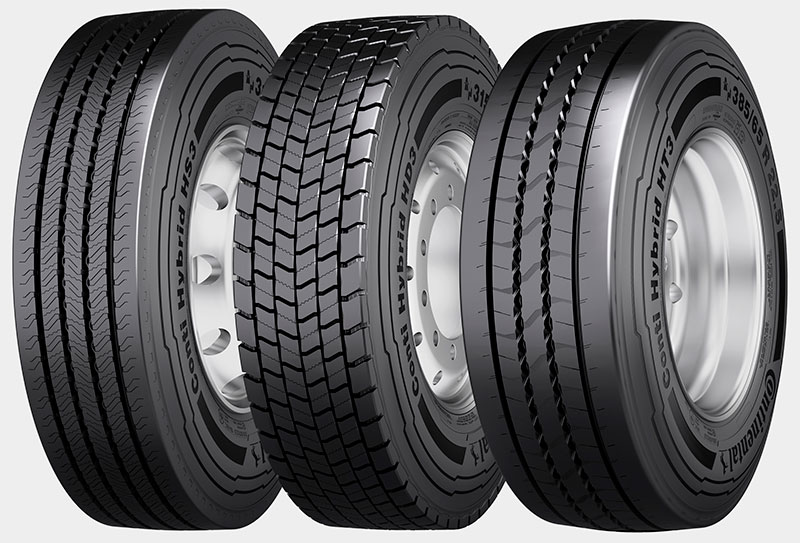Tires are a key component of a car in terms of safe driving. Properly selected "tires" - a pledge of trouble-free and comfort. Proper tire selection will help reduce fuel costs and even maintenance. The article is intended to select tires for ordinary, "civilian" cars in Russian road conditions. Accents are also placed on security. Modern models of most manufacturers are sufficiently resistant to wear and high mileage. After 40-50 thousand kilometers, even the best rubber catastrophically loses properties. And after 4-5 years, the structure of any tires becomes fragile. Chemical reagents and ultraviolet light, daily temperature changes and other environmental factors are enemies of any composition.

Content:
The best car tire manufacturers - which company is better to choose
Buying tires by brand is not the worst idea. In order not to miscalculate, you can choose the products of manufacturers of "top-tier" with a world name.
Especially good "flagship" brands:
1. Pierlli
2. Michelin
3. Dunlop
4. Goodyear
5. Bridgestone
The products of these companies will definitely not disappoint, but still it is better to choose tires according to more important criteria than the manufacturer's reputation. Much depends on the correct selection for seasonality and tire size.
In previous decades, domestic manufacturers didn’t have the best reputation, but modern Russian brands Cordiant, Matador, Nordman and Amtel produce high-quality products with really cool features.
We also mention the little-known, but very high-quality brands - for example, Lassa or Superia. These low-cost foreign brands are a little inferior to the more expensive "rubber brothers".
Unidentified cheap models of Chinese origin should be avoided in every way - these are extremely unsafe savings.
In any case, you should follow the recommendations of the automaker and operate the tires in the right conditions:
- with a certain pressure on the instructions - without regard to the "tips experienced";
- avoiding strong tread wear and not using tires for more than 4-5 years;
- installing tires only those sizes that are allowed in the "murzilka" - technical maintenance manual.
With this approach, even inexpensive tires will last a long time, and handling will remain at a high level. Deviations from recommendations reduce both service life and safety. These rules are more important than the use of expensive "famous" rubber. More detailed and entertaining about specific brands and models is described in the rating of manufacturers of tires.
Types of tires for cars
Tires for "ordinary civilian" cars can be distinguished by seasonality. Actually, there are only two types: summer and winter, but there are nuances.
Summer tires

Lighter in weight and more rigid in composition. The tread design is designed to take as much water as possible out of the contact patch under rain conditions: loss of controllability due to aquaplaning is the enemy of safety. The purpose of classic summer tires is maximum controllability of the car at the warm temperature of dry and slightly damp asphalt. There are such varieties of summer tires as intended for off-road trips, rain tires (more precisely, "anti-rain"), speed, reinforced, etc.
Advantages of summer tires:
- minimum weight;
- softness (affecting handling) at warm temperatures;
- low noise level;
- high comfort.
Disadvantages:
- radical loss of controllability characteristics at low temperatures - starting from +4 - +6 degrees;
- tires become harsh under winter conditions, roughly speaking - "turns into skis";
- low level of adhesion with cold (and even more so - snow-covered) asphalt: the car is more often prone to drifting and slipping.
- See also: 7 best car summer tires
Winter tires: with spikes and without

Even in warm regions, where snow is a rare guest, the use of winter tires is strictly necessary for anyone who cares about their own safety. By the way, there is a common misconception that the “winter” is supposedly intended for driving on ice and snow. This is not at all the case: the task of this type of tire is to work at cold temperatures, and not on slippery surfaces.
Winter tires can not be operated in warm weather. It is believed that these tires cope with the road at a temperature not higher than +10 degrees. When the temperature rises, they begin to "float": the surface softens and wears out quickly, road adhesion deteriorates. The characteristic noise of winter tires is not the best companion for a motorist.
Winter tires are further subdivided according to the presence / absence of spikes. Studded tires are designed for frequent use on ice and on snowy roads, and friction winter tires (velcro) without studs are more versatile.
In regions with a real, snowy winter, it is better to use studded tires. This is a type of winter tire that is covered with metal spikes. The spikes "gnaw" in a slippery surface and provide a much higher level of adhesion to the road. However, they are useless (and even harmful) on ordinary asphalt: wear, high noise and fuel consumption are negative satellites of tires with spikes. There are models of winter tires with removable spikes.
A common myth is associated with the use of winter tires: the wider the contact surface ("spot"), the better the grip. This is not true. Narrow deeper "bite" into the snow surface due to higher pressure. Wide tires provide less pressure on the surface and are more likely to slip and slip. The narrower the contact patch, the better the "hold".
Advantages of winter tires:
- the composition remains soft even at sub-zero temperatures;
- while the car is shod with winter tires, the summer kit "rests": an economical approach;
- work on a snow-covered surface is much better than summer and "all-season" tires.
Disadvantages:
- good handling in cold dry weather relaxes inexperienced drivers: when snow falls, overconfidence can be dangerous;
- increased noise
- higher mass (load on the undercarriage);
- increased fuel consumption;
- the need for time "pereobuvatsya" in the summer set in a consistently warm weather.
- See also: 18 best winter tires
All season tires

All-season tires are not a universal solution for thrifty owners, but a compromise compared to two sets: for summer and for winter. In the warm season, the all-season cope worse than the summer models. On the snow (or at cold temperatures), they work worse than winter ones. Operation of all-season rubber can be justified only in a warm season, and in the winter - only in warm regions where the temperature rarely drops below -5 degrees. Under other conditions, "universality" can be a frankly dangerous factor.
Advantages of all season tires:
- small weight;
- the possibility of year-round use in regions with mild winters;
- the cost of one set of tires is always lower than two (for winter and summer).
Disadvantages:
- All Seasons work worse all year round than the corresponding seasonal kits;
- increased rubber consumption due to year-round use;
- on snow-covered (and even cold, dry) roads, the car is a little better controlled than shod in summer tires.
- See also:11 best all-season car tires
Sizes and how to read tire markings
Main selection criteria

The main criterion for selection is the correct size, which is appropriate for your car model. Valid sizes are listed in the instruction manual (or on the official website of the automaker).
Any deviation from the norms is a mess and a bad helper in the noble cause of security, and here's why:
- non-standard tire size seriously loads the suspension and shock absorbers of the car;
- there is a negative impact on the transmission;
- when turning, tires of a different size may touch the body;
- instrument indicators become incorrect: even a minimal deviation from the standard profile sizes leads to an increase (or decrease) in the speed visible on the speedometer by 5-10 km / h;
- cheats and odometer - odometer.
Tire sizes are marked with numerical indexes of the type 205/55 R16.
The letter R denotes the radial type of tire - others are not really made for "civilian" cars these days. The number after R indicates the diameter of the tire and disk in inches. On wheels with a diameter of 16 inches it is impossible to “fit” tires of a different size - only 16. The same rule applies, of course, for all other sizes. The first number in a fraction is a simple indicator: tire width (mm). Wide models are suitable for more powerful cars than for small cars. The larger this indicator, the greater the contact patch ("stick"), and, accordingly, the acceleration / deceleration characteristics (if the engine is powerful enough for this). On the snow-covered surface, narrower tires hold the road better. The second number in the fraction is the ratio of the height of the profile to the width of the tire. Translated into the universal - is the height of rubber from the "hole" to the tread, divided by the width, moreover, in percent.
In order to master the characteristic more quickly, let’s analyze it more clearly with examples:
1. > 55% are low-profile, suitable for passenger cars, have high controllability, but poor resistance to bad roads.
2. 60-75% are called high-profile, used for passenger cars and contribute to good stability on bad roads, though at the expense of handling and speed.
3. <80% are full-profile, used on SUVs, they can boast of high traffic and handling at low speeds, but are not designed for conventional cars.
Always follow the recommendations of the automaker when choosing tires for their characteristics. This requirement is essential for safety. Listen to the advice of "experienced" is possible only when they coincide with the rules of operation.
Other important types of labeling

The umbrella icon (or the words Rain / Aqua, etc.) denote a rain type of rubber that better fights aquaplaning, but may be less practical on dry pavement.
The snowflake icon (or the word Frost) indicates winter-type rubber.
Marking M + S ("clay + snow") may be present on both winter and all-season (and even summer!) Types of tires. It is rubber, better adapted for off-road. However, it is a misconception that M + S indicates cold seasonality. Do not believe this statement.
The four-digit type index 1517 denotes the production date. In this example, we are talking about the 15th week of 2017. The "younger" the tire when buying, the better: the lifespan is limited to 4-5 years, and no more. Moreover, the countdown is from the date of production, and not from the beginning of operation.
Tire selection options

Practical advice
1. Other things being equal, choose tires that weigh less. It's not about fuel consumption, and in a very serious dependence of the suspension on the weight of the tires. The smaller it is, the more comfortable the car feels and the less shock absorbers wear along with the other nodes in the chassis.
2. The higher the tread, the higher the noise level, especially in winter models. A controversial, but practical rule: a good, safe rubber is slightly louder than its counterparts. However, modern rubber compounds provide sufficient sound comfort.
3. Soft tires are more comfortable, but have a longer stopping distance. They are designed for lovers of a quiet, reliable ride.
4. The asymmetric tread, although considered safer in rain conditions, is less practical: firstly, it is more difficult to find a replacement for serious tire damage, and secondly, there are difficulties with punctures: the reserve may not be suitable for the punctured side.
5. For winter models of rubber, it is better to choose a narrow profile: it will help you to “bite” deeper into the snow and ice.
Speed and mass
Regardless of the type of seasonality of tires, they may have special qualities that determine their narrower purpose. Example - speed indicators. They indicate the maximum speed allowed for this model. Letters from M to Y denote speeds from 130 to 300 km / h: for example, marking W = 270 km / h.
Expensive high-speed models offer higher grip at high speeds. However, in any case, we do not recommend exceeding the speed outside the specially designed auto racing tracks. Dizziness is the main cause of accidents, and the article focuses specifically on safety.
There are types of tires depending on the maximum permissible mass. Weight load indices are more often important for commercial vehicles, or for passenger cars with high payloads (SUVs, mini trucks, pickups).
Marketing tricks that should not be "led"
Separate technologies of tire covers (increased tread, puncture resistance "Run Flat", etc.) are needed for off-road conditions. As a rule, for improved additional characteristics of tires one has to pay not only with a ruble, but also with a decrease in universality. For example, off-road tires do not behave very well in urban environments due to noise, reduced comfort and handling, increased fuel consumption. Therefore, we recommend to look at special types of tires only if you plan to operate the car in non-standard conditions: high speeds, lack of roads, transportation of goods, etc.
You should not trust the assurances of manufacturers about the "economy", reduced fuel consumption and high resistance to wear. These are too minor factors to be taken seriously. Yes, there really are tire models that help reduce fuel consumption. At best, and under ideal driving conditions, we are talking about tenths of a percent. In other words, such tires will help save 100-200 grams of fuel for every 100 liters and no more. Wear resistance? All modern models are quite reliable, but in any case, the "lifespan" of tires does not exceed 5 years or 40-50 thousand km. Even expensive tires that have been used for longer are simply dangerous and unreliable.
Tire cost for cars

The price is influenced by such factors:
1. Brand identity: as a rule, you should not overpay for the brand if the tires will be used on an inexpensive car in ordinary urban environments.
2. Country of origin: domestic ones are much cheaper, but among the Russian models more and more often there are very worthy copies, without compromises in reliability or safety. The low prestige of Russian brands is a rapidly becoming obsolete myth from the past.
3. Tire size: the larger the wheel diameter, the more expensive tires are. The least expensive tires are small cars and compact hatchbacks. "Shoes" for large sedans and SUVs is much more expensive.
4. It should be borne in mind that much depends on the seasonality of sales - for example, the price of winter tires increases with the arrival of cold weather, and vice versa. The cost of foreign models is also affected by the current exchange rate of the ruble.
| Mark | Dimensions | Price, rub |
|---|---|---|
| Nokian nordman | R15 185/65 | 2850 |
| Bridgestone turanza | R15 185/65 | 3360 |
| Amtel Planet DC (Russia) | R15 185/65 | 2420 |
| Hankook ventus | R19 245/40 | 12210 |
| Goodyear Excellence | R19 245/40 | 14950 |
| Dunlop grandtrek | R19 245/40 | 10820 |
Summarize

Many manufacturers have proprietary technology with sonorous names - when choosing a tire you should hardly focus on them seriously. As a rule, these are only marketing tricks that have almost no effect on practicality of use. For example, some models are equipped with the popular technology "Run Flat", which allows you to continue to move even with a flat tire.Despite the obvious advantage, such tires are more expensive and heavy, almost disposable and can not always be replaced in car services, especially away from major cities.
The main rules for choosing a "shoe" for a car:
1. Use only the dimensions specified in the user manual.
2. Saving on all-season tires is permissible only in a warm climate. Winter tires are much better than "universal". Studded tires are good in conditions of constant snow and ice on asphalt.
3. The quality of Russian tires has improved significantly in recent years and is now rarely inferior to foreign counterparts.
And finally, the most important thing: any tires strictly require proper operation and care. Constantly monitor the level of pressure, balancing, as well as camber / toe and other vehicle chassis parameters. Only in this case, the tires will last a long time, and driving will be truly safe and comfortable. Have a good choice - and good roads!
It will be interesting to friends too







